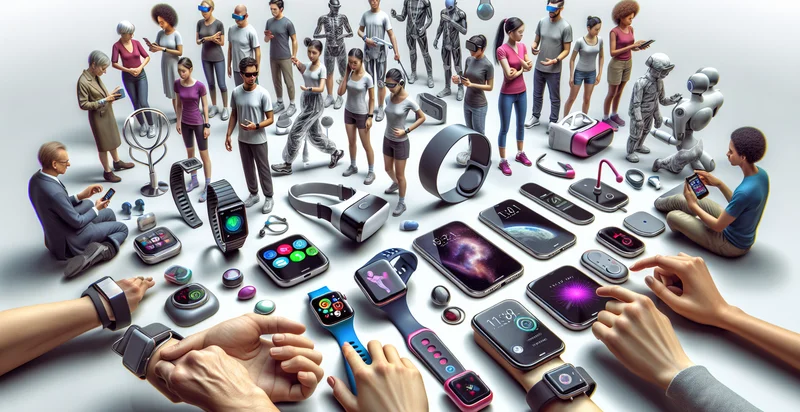Identify wearable tech types
using AI
Below is a free classifier to identify wearable tech types. Just upload your image, and our AI will predict what type of wearable technology it is - in just seconds.

Contact us for API access
Or, use Nyckel to build highly-accurate custom classifiers in just minutes. No PhD required.
Get started
import nyckel
credentials = nyckel.Credentials("YOUR_CLIENT_ID", "YOUR_CLIENT_SECRET")
nyckel.invoke("wearable-tech-types", "your_image_url", credentials)
fetch('https://www.nyckel.com/v1/functions/wearable-tech-types/invoke', {
method: 'POST',
headers: {
'Authorization': 'Bearer ' + 'YOUR_BEARER_TOKEN',
'Content-Type': 'application/json',
},
body: JSON.stringify(
{"data": "your_image_url"}
)
})
.then(response => response.json())
.then(data => console.log(data));
curl -X POST \
-H "Content-Type: application/json" \
-H "Authorization: Bearer YOUR_BEARER_TOKEN" \
-d '{"data": "your_image_url"}' \
https://www.nyckel.com/v1/functions/wearable-tech-types/invoke
How this classifier works
To start, upload your image. Our AI tool will then predict what type of wearable technology it is.
This pretrained image model uses a Nyckel-created dataset and has 18 labels, including Activity Trackers, Augmented Reality Glasses, Emergency Health Devices, Fitness Trackers, Health Monitors, Sleep Trackers, Smart Clothing, Smart Glasses, Smart Rings and Smartwatches.
We'll also show a confidence score (the higher the number, the more confident the AI model is around what type of wearable technology it is).
Whether you're just curious or building wearable tech types detection into your application, we hope our classifier proves helpful.
Related Classifiers
Need to identify wearable tech types at scale?
Get API or Zapier access to this classifier for free. It's perfect for:
- Personal Fitness Tracking: The wearable tech types identifier can be used in fitness applications to classify wearable devices based on their functionality, such as fitness trackers, smartwatches, or heart rate monitors. This classification helps users select the appropriate device based on their fitness goals and preferences.
- Retail Product Differentiation: Retailers can implement this function to categorize wearable technology products on their e-commerce platforms. By accurately labeling wearable types, retailers can enhance customer experience through streamlined navigation and targeted recommendations.
- Market Analysis and Trend Forecasting: Market researchers can use the identifier to compile data on the prevalence of different wearable tech types in sales reports. This classification assists in analyzing industry trends and predicting future market movements, which is invaluable for strategic planning.
- Insurance Risk Assessment: Insurance companies can leverage this function to classify wearables used for health monitoring when assessing policy risk. By understanding the type of wearable tech a policyholder uses, insurers can tailor their coverage options and adjust premiums based on risk profiles.
- Health Monitoring Program Development: Healthcare providers can utilize this identifier to better understand the types of wearables their patients are using for health monitoring. This can aid in developing tailored health programs that encourage the use of specific devices to improve patient outcomes.
- Product Development and Innovation: Tech companies can use the wearable tech types identifier to inform their product development strategy. By analyzing the classification of existing products, companies can identify gaps in the market and innovate new devices that meet unfulfilled consumer demands.
- Educational Tools for Tech Adoption: Educational institutions can employ this function to create programs that familiarize students with various wearable technologies. By categorizing devices, educators can design curricula that encourage learning about their applications in health, fitness, and everyday life.


